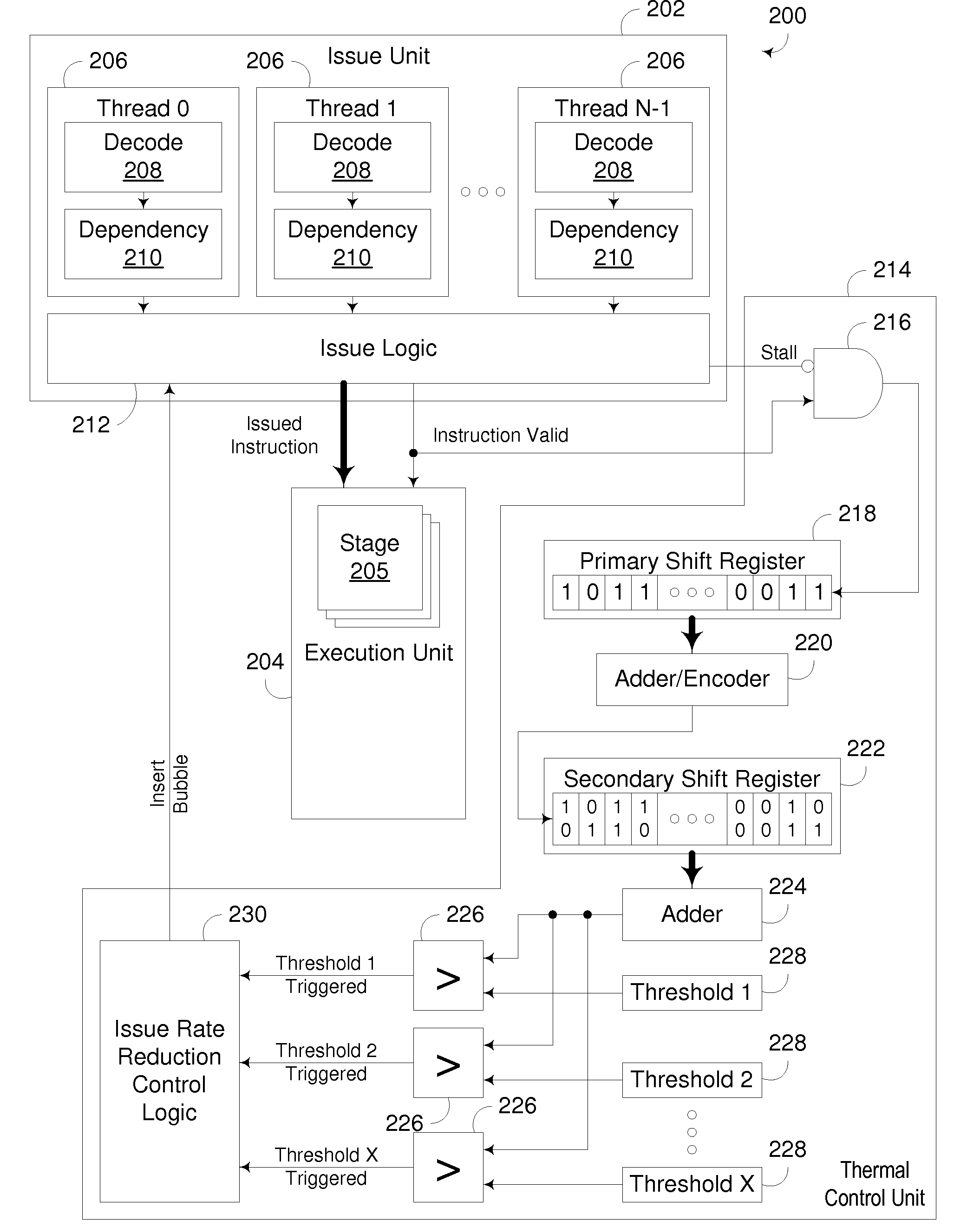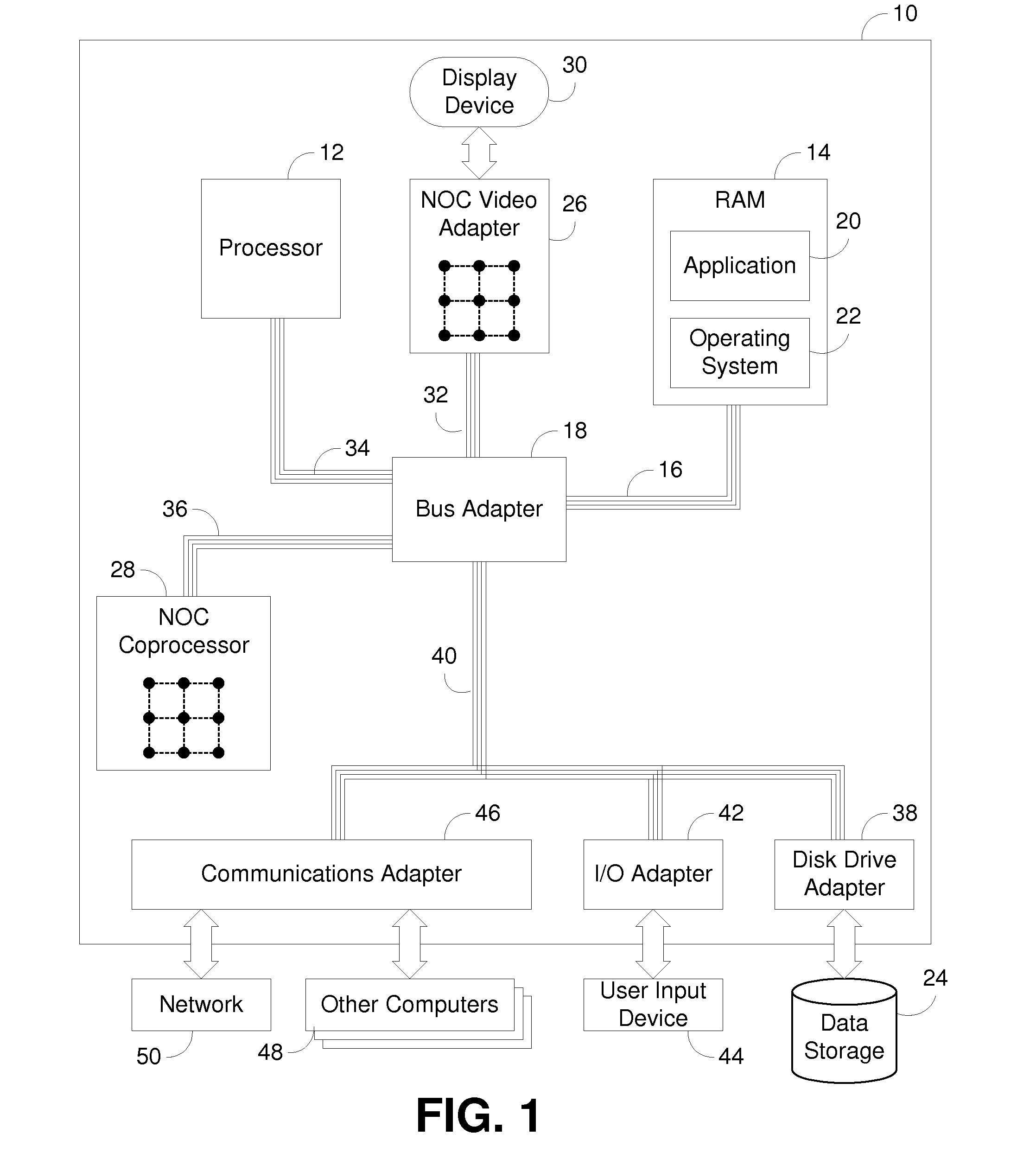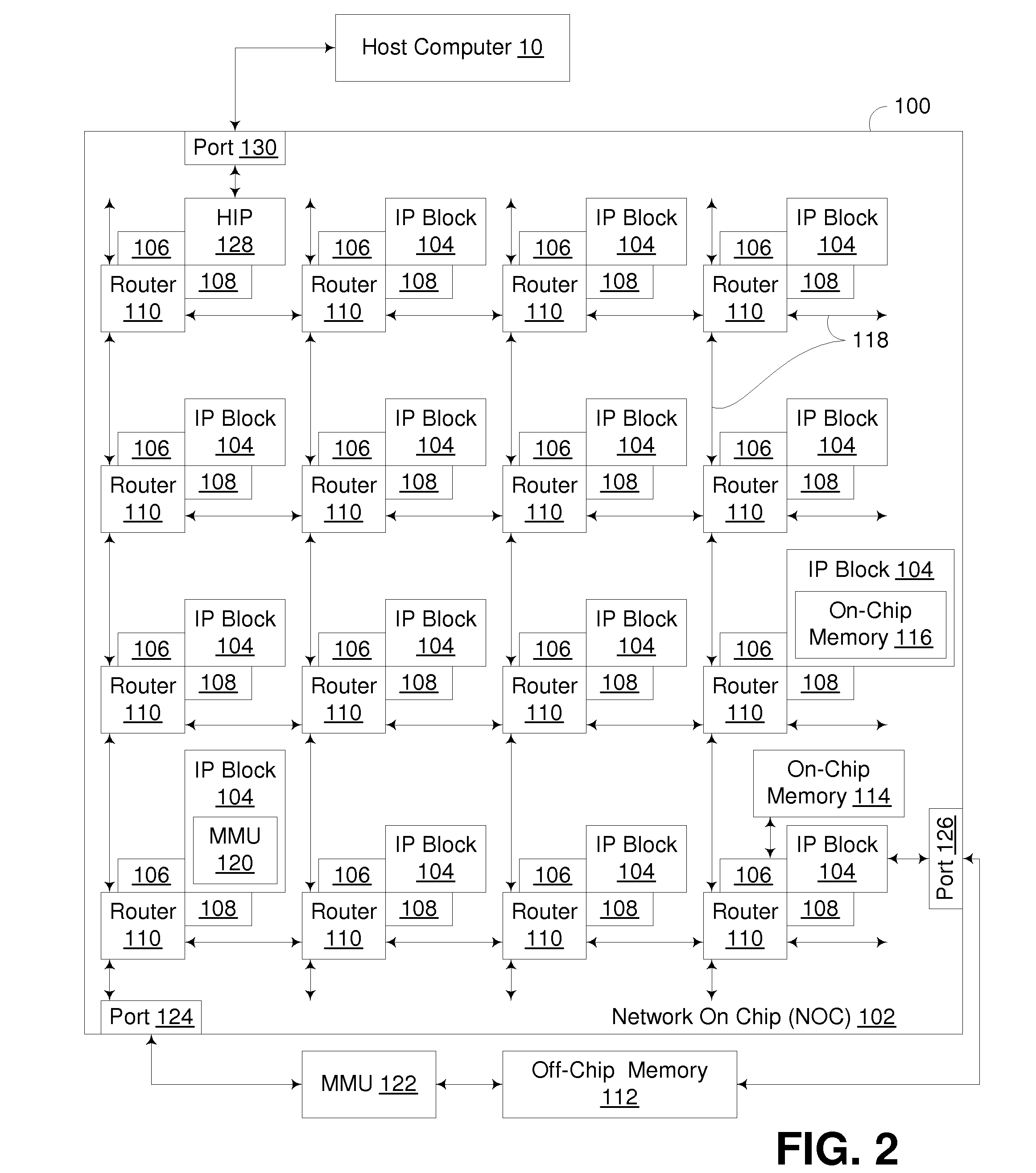Processing Unit Incorporating Issue Rate-Based Predictive Thermal Management
- Summary
- Abstract
- Description
- Claims
- Application Information
AI Technical Summary
Benefits of technology
Problems solved by technology
Method used
Image
Examples
Embodiment Construction
[0025]Embodiments consistent with the invention utilize an issue rate-based predictive thermal management technique in a microprocessor or other integrated circuit to track the rate in which instructions are issued to one or more execution units in the processing unit, and selectively delay the issuance of subsequent instructions to the execution unit(s) based upon the tracked issue rate to predictively control the thermal output of the integrated circuit.
[0026]In contrast with conventional on-chip thermal management techniques that exclusively use a thermal sensor to detect if a processor has reached some threshold and switch to a single issue thermal throttle mode to fully disable pipelining, the illustrated embodiments allow for a more proactive and highly configurable approach that selectively inserts bubbles into a pipelined execution unit based upon a tracked rate of issue of instructions by the issue logic that feeds the execution unit.
[0027]In particular, to prevent high pow...
PUM
 Login to View More
Login to View More Abstract
Description
Claims
Application Information
 Login to View More
Login to View More - R&D
- Intellectual Property
- Life Sciences
- Materials
- Tech Scout
- Unparalleled Data Quality
- Higher Quality Content
- 60% Fewer Hallucinations
Browse by: Latest US Patents, China's latest patents, Technical Efficacy Thesaurus, Application Domain, Technology Topic, Popular Technical Reports.
© 2025 PatSnap. All rights reserved.Legal|Privacy policy|Modern Slavery Act Transparency Statement|Sitemap|About US| Contact US: help@patsnap.com



